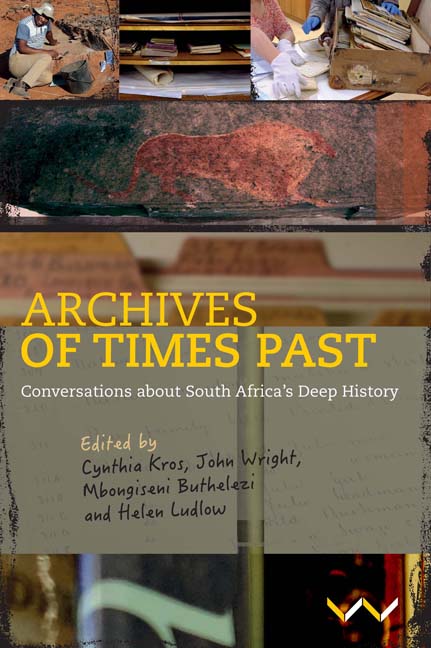Book contents
- Frontmatter
- Contents
- List Of Illustrations
- Acknowledgements
- Editorial Note
- Map
- PART I FIRST THOUGHTS ABOUT THE ARCHIVE
- PART II COMMENTARIES AND CONVERSATIONS
- PART III BECOMING EXPLORERS
- PART IV ENGAGING WITH ARCHAEOLOGY AND ROCK ART
- PART V CONFLICTING OPINIONS
- PART VI FURTHER THOUGHTS
- Glossary
- Contributors
- Index
Chapter 16 - A Lion’s Life: Tracking the Biography of an Archaeological Artefact
Published online by Cambridge University Press: 26 May 2022
- Frontmatter
- Contents
- List Of Illustrations
- Acknowledgements
- Editorial Note
- Map
- PART I FIRST THOUGHTS ABOUT THE ARCHIVE
- PART II COMMENTARIES AND CONVERSATIONS
- PART III BECOMING EXPLORERS
- PART IV ENGAGING WITH ARCHAEOLOGY AND ROCK ART
- PART V CONFLICTING OPINIONS
- PART VI FURTHER THOUGHTS
- Glossary
- Contributors
- Index
Summary
WEAVING TOGETHER TWO STORIES
A rock lies on a shelf in a small storeroom at Wits University in Johannesburg. On one side of the rock is a painted image of an adult lion, his mane heavy across his shoulders. (A photograph of the lion appears on the front cover of this book.) His tail curves upwards in excitement as he crouches, preparing to charge his prey. Of the context in which he was painted we know nothing, for the rock has been cut out from its original place in a sandstone outcrop. The lion is left isolated, his compressed energy forever unreleased.
The front feet of the lion are incomplete, and there are remnants of paint elsewhere on the rock. Clearly he once formed part of a larger composition. He is finely painted in two shades of red, and brushstrokes are visible across the lion's mane. Who was the artist? Was the image created from life, or is the lion an imaginary one? Where exactly did the block of stone come from? How did it end up in Johannesburg?
The painted rock is part of the collection of the Rock Art Research Institute (RARI) at Wits University. Before I began my research, there was virtually no documentary evidence about where it had come from. It had no story. But in the end I was able to piece together something of the lion's life. In archaeology and art history, we often talk about an object's ‘biography’, meaning its life story. We accept that objects, like people, have life stories. Here I use the idea of biography to stitch together different pieces of the story of the lion image.
The image was made by an artist in a hunter-gatherer community, possibly hundreds of years ago, maybe even more than a thousand. Why did the artist paint this image? What did it mean? As the largest feline (cat-like animal) in the landscape, lions inspired fear among people, but also, we think, a strange familiarity. Unlike other cats, they lived in groups like people do, hunted the same prey as people did, and sometimes ‘shared’ their food with people. We think that hunter-gatherers saw lions as having the ability to sustain the lives of people, as well as to take the lives of animals, and sometimes of humans.
- Type
- Chapter
- Information
- Archives of Times PastConversations about South Africa's Deep History, pp. 217 - 226Publisher: Wits University PressPrint publication year: 2022



